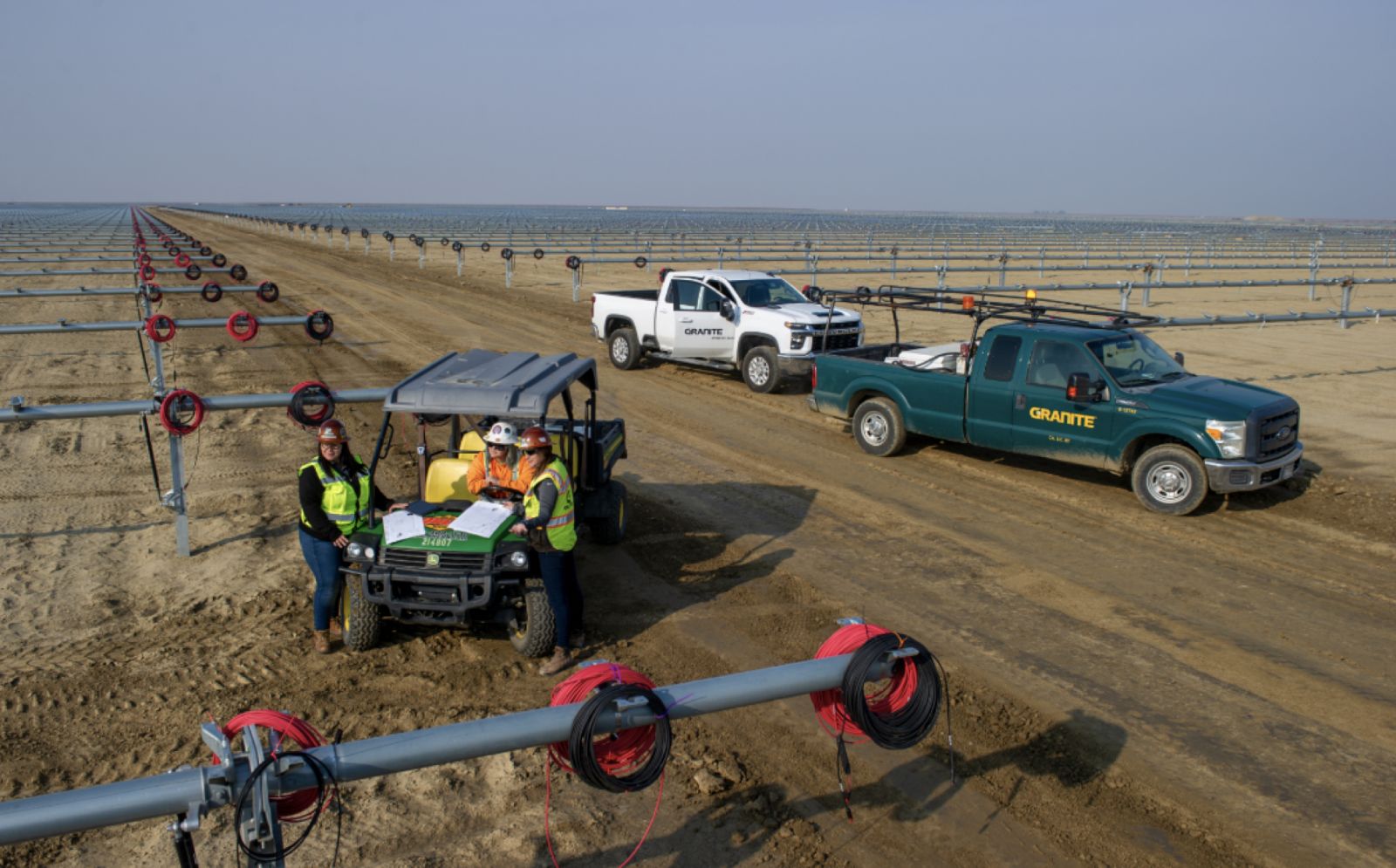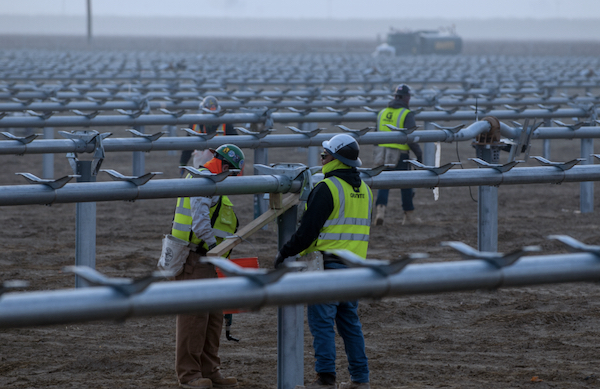The IRA Effect
The 2022 passage of the Inflation Reduction Act (IRA) is big news in the renewable energy space, particularly for utility scale PV solar. This bill provides substantial new tax incentives for the production of renewable energy, including hydro power, geothermal, wind, and nuclear. However, the construction industry recognizes that utility scale solar is one of the best candidates to take advantage of these new incentives due to how quickly a new solar plant can be planned, permitted, and constructed.

The forecast for growth in the solar energy field was high before the IRA was passed, and that projection has only increased in light of the act. Total estimates vary, but something in the range of $300 billion will go to funding all renewable energy projects over the next ten years. The total size of the solar energy market is expected to triple in the next seven years, largely due to the IRA.
As a service provider to the companies developing utility scale solar projects, those involved in construction won’t receive tax incentives directly, but can expect to see their business grow as clients begin to pursue the various incentives. These experts can help their clients meet the requirements for these incentives, especially as they relate to labor compensation and apprenticeship program participation.
Tax incentives under the IRA include several categories that will contribute to the total amount of savings to the energy producer. These factors include paying prevailing wages to the workers building the projects, as well as using domestically-sourced materials like solar panels, piles, and racking. Building on a site that was previously used to produce energy from non-renewable sources like coal mines or oil fields will bring an additional credit.
Regarding the incentives for paying a prevailing wage, it’s important to choose a provider that’s a signatory to several trade unions in multiple states. When working within the Union framework, you can be confident that your construction partner will meet the prevailing wage goal. Look for companies with a robust and qualified apprenticeship program; the IRA incentivizes hiring apprentices, but they must be active in a qualified program, which is the typical setup for Union labor.

Construction contractors that work in open shop rely on third party labor providers and staffing agencies to find craft labor. The apprentice participation goal is new for most of these providers, but they have been reacting quickly to either start their own qualified programs or enroll their employees in existing programs.
One important consideration for the IRA is that the incentives only apply to projects that start producing renewable energy after January 1, 2025. Therefore, it appears that developers are holding off on construction, so the projects are not completed before the qualifying date. Currently, it feels like the industry is in the calm before the storm—we know we will need to be ready as we get closer to 2025.
So, what are we seeing from the contractor’s perspective? Engineering, Procurement and Construction companies, and their clients, the developers and owners, are planning for unprecedented growth. Projects that were shelved due to excessive development costs are coming back to life as the IRA incentives are factored in making marginal projects more viable. We are also seeing greater investment in and growth of domestic manufacturing for solar panels, wire, and fabricated steel components needed for trackers and support piles, which is a welcome development.
.jpg)
The market for solar power has been trending upward for 20 years now. In 2012, the largest solar power plant in the country was 170 MWac. Today, an average project is over 200 MWAC, with many projects reaching 450 MWac. Growth has been staggering, largely driven by falling component prices, particularly the modules (solar panels), the tax incentives, and the demand that power come from renewable sources. States and big corporations are setting huge goals and funding more projects. All the forces seem to be in alignment and point towards more renewables, more solar.
The IRA is providing a profound opportunity to our country. The choices and projects we make in the next ten years have the potential to launch us into a more electrified and sustainable energy future.
Lawrence Faulkner is Energy Division Chief Estimator at Granite Construction, which offers civil, structural, and mechanical construction services to utility scale solar and battery energy projects.
Granite Construction | www.graniteconstruction.com
Author: Lawrence Faulkner
Volume: 2023 September/October









.png?r=1841)


